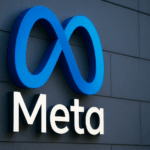In a notable expansion within the tech industry, Nvidia (NASDAQ:NVDA) reported an impressive 32% increase in its automotive division revenue for the third quarter. Despite being a minor part of its overall financial picture, this surge highlights the growing significance of AI in automotive applications. Automakers, increasingly relying on Nvidia’s technologies, are transitioning from initial pilot projects to incorporating advanced driver-assistance systems and controlled-route autonomy into structured development and real-world applications. This shift marks a maturation in the integration of AI in the automotive sector, focusing on safer and more efficient vehicle operations.
Looking back at the industry, automotive manufacturers have consistently aimed to integrate AI technologies to revolutionize vehicle automation. Nvidia’s recent success reflects a broader industry trend where AI solutions are becoming integral to vehicle design and functionality. Previously, there were numerous efforts to achieve similar advancements, but challenges in cost, technology readiness, and regulatory concerns posed barriers. Today, these issues are addressed more uniformly, thanks to Nvidia and similar tech firms providing scalable and reliable platforms.
How Are Automakers Adapting to AI?
Automakers are making strategic shifts towards AI-powered systems by utilizing Nvidia’s DRIVE platform, which enhances vehicle capabilities through advanced vision systems and sensor fusions. These systems are designed to improve real-time decision-making and route-specific autonomy, essential for the transition to autonomous vehicles.
“The industry is at a pivotal moment,” Nvidia stated, “as unified architectures provide a more consistent and reliable foundation for automation.”
This approach allows automakers to move from experimenting with autonomous features to fully integrating such systems into modern vehicle architectures.
What Role Do Partnerships Play in AI Development?
Collaborations have become crucial as companies like General Motors and Nvidia partner for enhanced AI integration in vehicles and factory operations. Such partnerships enable shared development stacks, reducing the need for proprietary systems and improving scalability across different models and brands.
Nvidia explained, “Our partnerships leverage our AI expertise to bring efficient and innovative solutions for the automotive industry.”
These collaborations mark significant progress toward creating standardized platforms for a range of automated functions.
The DRIVE AGX Hyperion 10 platform exemplifies Nvidia’s push for advanced vehicle autonomy, supporting levels 3 and 4 of automation. This system allows automakers to simulate edge cases like pedestrian unpredictability and lane violations, aiding in safety regulation compliance. Regulatory demands for robust evidence of model behavior make simulation an essential step in automotive innovation.
While fully autonomous city-driving remains complex, controlled-route autonomy gains popularity among logistics operators. These deployments in predictable environments such as campus loops and freight hubs provide efficient alternatives and clear regulatory pathways, reinforcing AI’s role in achieving reliable system performance.
As Nvidia continues to streamline development processes with AI, the automotive industry’s shift to advanced autonomous functionalities is poised to become widespread. Strategic partnerships and unified compute platforms drive this change, positioning Nvidia as a key influencer in vehicle technology advancement. This aligns with a larger movement towards safer, more efficient transportation solutions enabled by AI.








